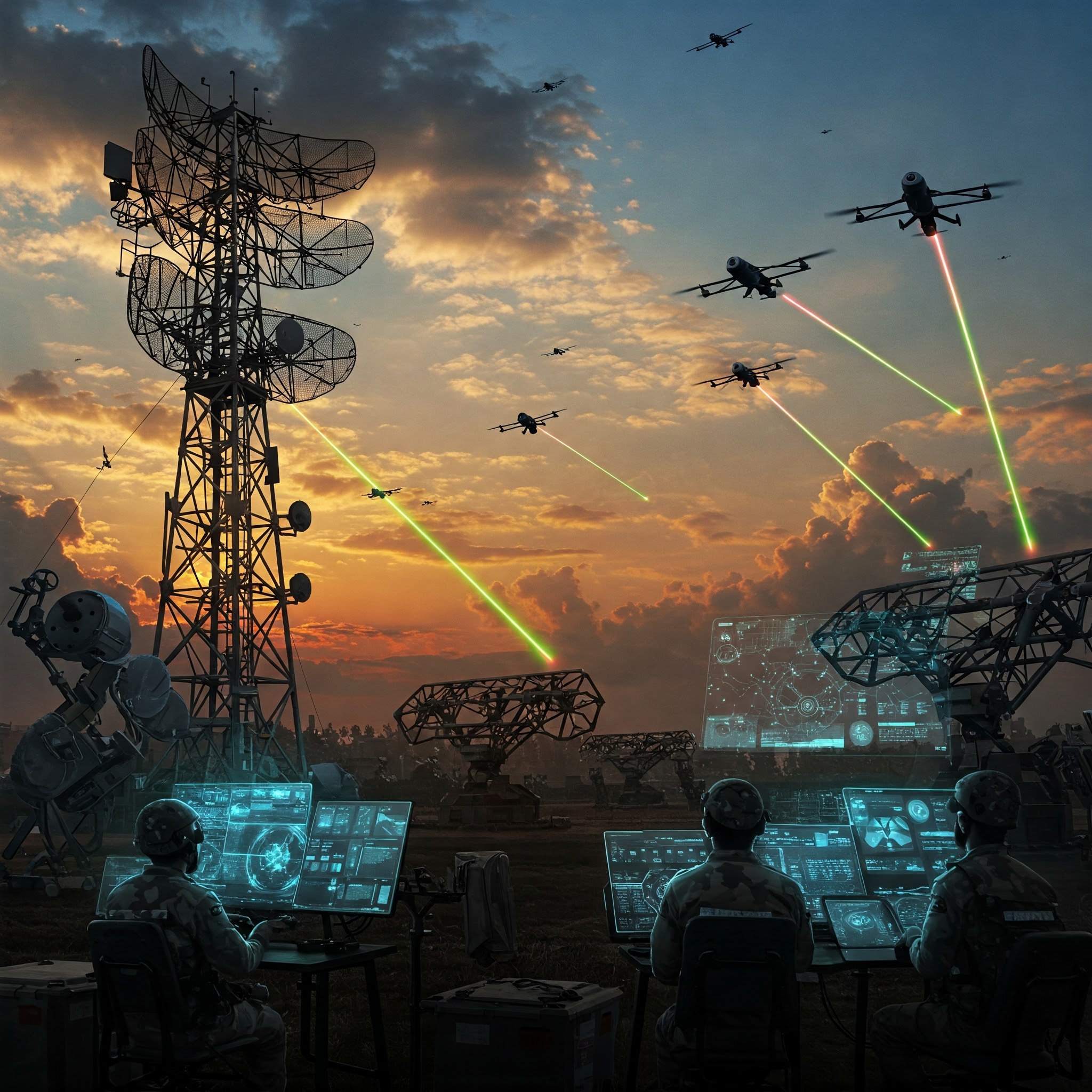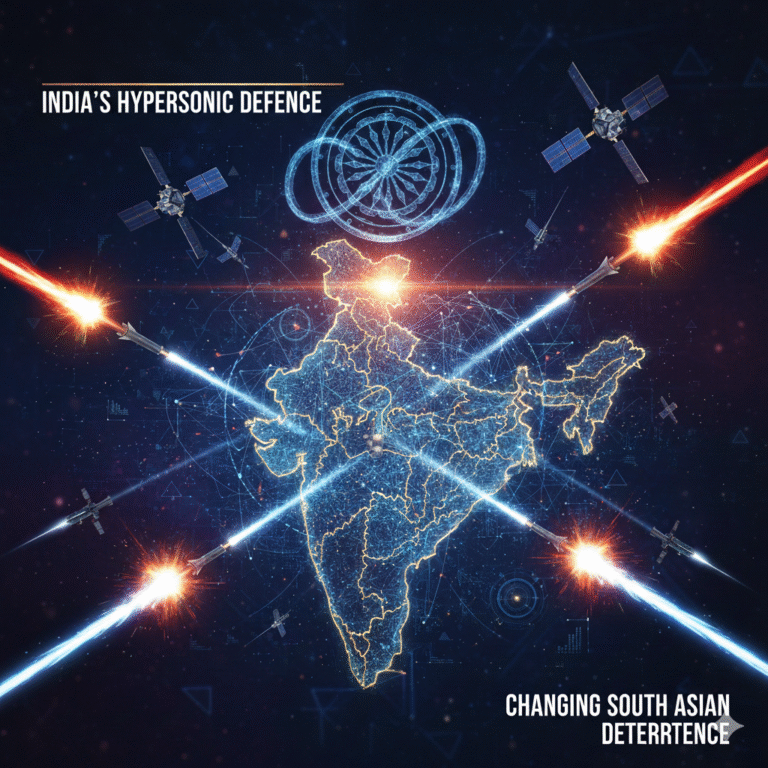In an era where drone technology is rapidly advancing, becoming both an asset and a threat in modern warfare, the development of counter-drone systems has become imperative. India has made a remarkable leap in this direction with the introduction of Indrajaal, an indigenous AI-powered Counter-Unmanned Aircraft System (CUAS) developed by Grene Robotics. Designed to offer a 360-degree, automated, and integrated aerial defense system, Indrajaal represents a paradigm shift in securing national airspace from modern aerial threats.
The Rising Threat of Drones in Warfare
From Surveillance to Strike: The Drone Evolution
Drones, once confined to surveillance missions, have evolved into powerful tools capable of executing precision strikes, espionage, and sabotage. Non-state actors, terrorist groups, and enemy states are increasingly relying on drones for low-cost, high-impact attacks, making airspace security a pressing concern.
Drone Incidents and Lessons Learned
Notable incidents like the drone attack on the Jammu airbase in 2021 and repeated cross-border drone infiltrations have underscored India’s vulnerability. These events highlighted the need for a robust CUAS capable of detecting, tracking, and neutralizing rogue drones.
What is Indrajaal?
The Indigenous Innovation
Indrajaal, developed by Grene Robotics, is India’s first comprehensive AI-powered CUAS. Unlike traditional systems that operate in silos, Indrajaal integrates multiple sensors and effectors using advanced AI algorithms and deep learning for autonomous functioning.
Key Features
- Coverage: Protects up to 4,000 sq. km of airspace
- Detection Capabilities: Real-time detection of drones, UAVs, loitering munitions, and even swarm attacks
- Neutralization: Includes soft kill (RF jamming, spoofing) and hard kill (kinetic systems, laser weapons)
- Autonomous: Requires minimal human intervention, enabling faster and more efficient threat response
The Technology Behind Indrajaal
Artificial Intelligence and Deep Learning
AI enables Indrajaal to identify and classify aerial threats using behavior patterns, flight paths, and electronic signatures. The system adapts and improves over time, reducing false positives and enhancing efficiency.
Multi-Layered Defense Architecture
Indrajaal operates on a layered defense mechanism:
- Detection Layer: Radar, electro-optical sensors, and RF sensors
- Classification Layer: AI-based pattern recognition
- Neutralization Layer: Directed energy weapons, kinetic interceptors
Integrated Command and Control
The command system synchronizes data from various sensors and effectors, delivering a centralized view of the airspace. Operators receive actionable insights, enhancing situational awareness.
Operational Use Cases
Border Security
Indrajaal can secure border regions from drone infiltration, especially in areas like Punjab and Jammu & Kashmir where drone incursions have increased.
Military Installations
It protects key defense assets including ammunition depots, airbases, and command centers.
Critical Infrastructure
Nuclear power plants, oil refineries, and other strategic assets can benefit from 24×7 drone monitoring.
Urban Airspace Security
With increasing drone use in urban areas, Indrajaal can be integrated into smart city defense grids to ensure civilian safety.
Advantages of Indrajaal Over Traditional CUAS

- Scalability: Modular design allows coverage expansion
- Cost Efficiency: Minimizes human labor and operational cost through automation
- Real-Time Response: AI ensures faster threat recognition and response time
- Resilience: Designed to counter swarm drone attacks, a major challenge for conventional systems
Challenges and Areas of Improvement
Technological Evolution
As drone technology advances, the system must continually upgrade to counter AI-enabled or stealth drones.
Regulatory Framework
Deploying Indrajaal widely requires a robust legal and regulatory framework governing drone surveillance and neutralization.
Cybersecurity
Being AI-driven and connected to a network, Indrajaal must be safeguarded against hacking and data breaches.
Global Significance and Strategic Edge
A Make-in-India Milestone
Indrajaal aligns with the Atmanirbhar Bharat initiative and reduces dependency on foreign CUAS systems.
Export Potential
With growing demand for counter-drone systems globally, Indrajaal has potential export value to countries facing similar drone threats.
Strategic Leverage
A robust CUAS gives India an asymmetric edge in conflict zones and deterrence diplomacy.
Expert Opinions
“Indrajaal is a game-changer. It takes India’s drone defense capability into the future.” — Lt. Gen. (Retd) Vinod Bhatia
“Its autonomous functioning and AI-driven precision make it unmatched in today’s threat landscape.” — Saurav Kumar, CEO, Grene Robotics
Conclusion
In an increasingly drone-saturated battlefield, Indrajaal offers India a futuristic, indigenous, and intelligent defense mechanism. It reflects the country’s capability to innovate and respond to emerging threats with precision and sophistication. As nations gear up for AI-enabled warfare, systems like Indrajaal will not only protect borders but also define the new norms of aerial security.









+ There are no comments
Add yours